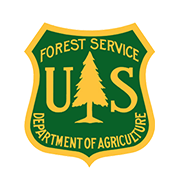Single Publication
Could not determine your location.
Cerro Pelado Post-Fire BAER
Unit Information
Incident Contacts
- BAER InformationPhone:707-853-4243Hours:8am-8pm
- Santa Fe National Forest Public AffairsEmail:Phone:505-438-5320
Cerro Pelado Post-Fire Debris Flow Hazards Assessment Maps Completed
Cerro Pelado Post-Fire BAER
Publication Type: News 05/29/2022
CERRO PELADO POST-FIRE
DEBRIS FLOW HAZARDS ASSESSMENT MAPS COMPLETED
BAER SAFETY MESSAGE: Everyone near and downstream from the burned areas should remain alert and stay updated on weather conditions that may result in heavy rains and increased water runoff. Flash flooding may occur quickly during heavy rain events. Be prepared to act. Current weather and emergency notifications can be found at the National Weather Service website: www.weather.gov/abq/.
The USDA Forest Service (USFS) Burned Area Emergency Response (BAER) assessment team coordinated early with US Geological Survey (USGS) staff during its evaluation of the Cerro Pelado burned area to strategically assess potential post-fire impacts to the watersheds and predicted debris-flow response during damaging storm events.
USGS utilized the BAER team’s soil burn severity (SBS) map to model potential debris flow hazards within the burned area. The data estimates debris-flow likelihood, volume, combined hazard, and rainfall thresholds and are presented in the debris flow map (see below). The combined relative hazard metric is a combination of the likelihood of debris flow (in %) and potential volume of debris flow (in m3 or cubic meters).
USGS models estimate a moderate to high level of debris-flow hazard for the area burned by the Cerro Pelado Fire in the upper portions of the Church Canyon-Jemez River and Peralta Canyon watersheds. Many stream reaches and drainage basins have a greater than 40% likelihood of debris flow occurrence at a 15-minute rainfall intensity of 40 mm/h (~ 0.4 inches of rain in 15 minutes). A few drainage basins are estimated to have a high level of debris flow hazard, with debris flow likelihood exceeding 60% and 80%, respectively. These highest hazard areas occur in several sections of the assessed burn area, including areas west of Los Griegos and Cerro Pelado Peaks and upper portions of Peralta Canyon.
The estimated likelihood of debris flows in the northeastern portions of the burn area are under 40% likelihood at 40mm/h, resulting in a predominantly moderate debris flow hazard. Southern portions of the fire have a moderate hazard of debris flows at rainfall rates of 40 mm/h and likelihood of debris flow occurrence ranging from 60% to less than 20%.
One of the maps that USGS developed depicts the likelihood of debris-flow hazard generation and estimates of flow magnitude in locations where debris flows initiate. The models do not predict downstream impacts, potential debris flow runout paths, or the spatial extent of debris-flow or flood inundation. The other two maps show estimated intensity volumes of debris flows, and the estimated probability/likelihood of debris flows.
This information is extremely important to inform our safety awareness of the burned areas, especially where there may be an increased risk of hillslope erosion, flooding sediment delivery to streams, and a higher probability of debris flows – all of which are potential risks to human life, safety, and property.
For information on what to do if you live in a recently burned area where debris flows are possible, and there is a rainstorm - before, during, and after – download the National Weather Service Post Wildfire Flash Flood and Debris Flow Guide (PDF 7.2 MB).
For additional information about the USGS emergency assessment of post-fire debris-flow hazards, go to: Emergency Assessment of Post-Fire Debris-Flow Hazards (usgs.gov).




 InciWeb
InciWeb